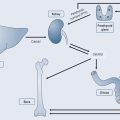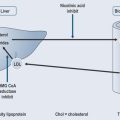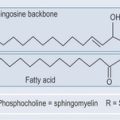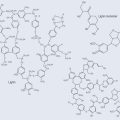Chapter 40 Toxicology
In the study of toxicology, a solid appreciation of pharmacokinetics and pharmacodynamics (see Chapters 14 to 19) is very important, as the mechanics of the two areas are very much a part of what makes a chemical harmful to a patient. Poisons or toxicants are chemicals that have harmful or adverse effects on living organisms. A chemical can be poisonous under one set of conditions and not under another. For example, potassium is a vital part of body metabolism, but too much will cause atrial fibrillation.
There are two different types of toxic reaction:
When dealing with chemicals, the following must be kept in mind:
The Occurrence of Poisons
Drug Absorption
Gut
This is a common route of entry. Different parts of the gut allow different rates of absorption:
Skin
• Factors Affecting Toxin Absorption through the Skin
Distribution and Transport
The Role of Blood
Enzymes
Chemicals can interfere with the enzymes that are vital as catalysts of metabolic processes in the body (see Chapter 19 ‘Pharmacodynamics: how drugs elicit a physiological effect’, p. 137):
The Importance of Correct Cell Structure
Terminology
Dose–Response Relationships
Toxicity testing can be also dubious:
Degrees of Toxicity
From this it is possible to see that the more toxic chemicals require a very low dosage.
How is the Concentration of Chemicals in the Body Determined?
Blood is a handy sample material because it is the main method by which chemicals are carried to all parts of the body: movement of chemicals is largely via the blood and lymph systems. This is why blood tests are so commonly used for a range of diagnostic tests (see Chapter 41 ‘Scientific tests’, p. 331).
Accumulation and Storage of Chemicals in the Body
Detoxification
This term covers the range of biochemical processes in the body that help to maintain its health by converting toxic substances to non-toxic ones and excreting them through the liver, skin, lungs and intestinal mucosa. The liver is the main site of detoxification in the body (see Chapter 17 ‘Metabolism’, p. 129).
Elimination of Toxins
• The Liver
An inefficient or impaired detoxification system can result in the accumulation and deposition of metabolic toxins and in increased free radical production and its ensuing pathology. Initially, the patient is usually unwell and lacks energy, but if this continues the effects may be lethal. It is also worth remembering the enterohepatic cycle (see Chapter 17 ‘Metabolism’, p. 131).
Genetic Factors
The phase I and II pathways of the liver are thought to be influenced by genetic factors.
Factors that Alter Toxicity
Age
• The Young
Drug Interactions
Professional bodies send out regular newsletters commenting on possible interactions. The websites of national agencies for drug safety (see Chapter 41 ‘Scientific tests’, p. 346) also have postings on the toxicology reports.
Plant Toxins
Oxalates
Generally, it is difficult to consume enough plant material for oxalates to cause problems. For example, it is found in high concentrations in rhubarb leaves, which are not normally eaten. Other examples include Polygonaceae: Rheum spp., which are varieties of rhubarb, including Rheum palmatum (Turkey rhubarb, Da Huang).
Lectins
Lectins are glycoproteins. They were discovered in the 1880s and found to be able to clump erythrocytes in vitro. They are now known to take part in several biological activities, including cell adhesion, the control of protein levels in the blood, glycoprotein synthesis (see Chapter 9 ‘Carbohydrates’, p. 71) and cause mitosis in cells that are not actively dividing. Because of this, lectins have the potential to alter cell permeability and generally interfere with cell metabolism.
Different lectins have different levels of toxicity and not all lectins are toxic.







